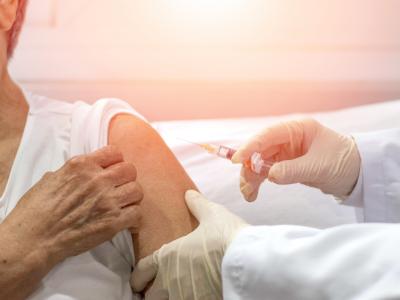Study analyzes patterns of movement of CRE infections in Atlanta
Using regional surveillance data, researchers from the US Centers for Disease Control and Prevention, the Atlanta Veterans Affairs Medical Center, and Emory University have determined that patients with carbapenem-resistant Enterobacteriaceae (CRE) infections in the Atlanta metro area transfer between healthcare facilities in similar patterns as Medicare patients, with the exception of a handful of nursing homes.
In a study today in Clinical Infectious Diseases, the researchers used surveillance data from the Georgia Emerging Infections program to identify all positive CRE cultures from urine or a sterile body site collected in 2016 in Georgia's Health District 3, an eight-county portion of the Atlanta metro area.
To construct a patient transfer network, each CRE was attributed to an acute care hospital (ACH), long-term acute care hospital (LTACH), or skilled nursing facility (SNF) based on timing of culture and facility exposures in the previous year. Centrality metrics were calculated from 2016 Medicare data and then compared with CRE-transfer derived centrality metrics.
During 2016, 283 CRE incident cases with concurrent or prior-year facility stays were identified, and positive cultures were most often collected at ACHs (141, 50%) and SNFs (113, 40%) and less frequently at LTACHs (29, 10%). The patient-sharing network as identified by Medicare transfer data included 93 facilities, with CRE cases originating in 17 of 20 ACHs (85%), 7 of 8 LTACHs (88%), but only 35 of 65 SNFs (54%).
The analysis of connectedness showed that the movement of patients with CRE between healthcare facilities (both direct and indirect transfers) mirrored the flow of Medicare patients between facilities, but the association was strong and significant only for ACHs and LTACHs. In six of the SNFs, the movement of CRE patients was not correlated with the movement of Medicare patients.
The authors of the study conclude, "In summary, we found patients with CRE move throughout the Georgia Health District 3 region, where initial CRE culture positive specimens as indicators of infection originated at almost all of the ACHs and over half of SNFs. Furthermore, we identified a subset of nursing homes involved in the flow of CRE patients that could not easily be explained by Medicare defined centrality measures, suggesting other factors may better explain CRE patient movement in nursing homes."
Feb 27 Clin Infect Dis abstract
Penicillin skin testing linked to antimicrobial de-escalation, reduced costs
The results of a quasi-experimental study published today in Open Forum Infectious Diseases show that penicillin skin esting (PST) in a community health system led to antimicrobial de-escalation in 71% of patients who tested negative and reduced costs.
In the study, which was conducted at SouthCoast Health Savannah in Savannah, Georgia, an intervention group of 100 adult patients who completed PST for a self-reported penicillin allergy was compared to a matched control group of patients who had a listed penicillin allergy as well as infectious diseases consultation. The patients in the control group were matched to infection diagnosis codes of members of the intervention group and then randomly selected and matched 1:1. Antimicrobial therapy and duration was documented for each patient, along with changes in therapy in the PST group.
The primary outcome was non-carbapenem beta-lactam days of therapy (DOT), and the secondary outcome was the average cost of antimicrobial therapy for the intervention group before and after PST.
Of the 100 patients in the intervention group, 98 tested negative for a penicillin skin allergy, and 70 (71%) of those 98 patients had changes directly made to their antimicrobial regimens. The most common change after a negative test (34 of 70 patients) was from carbapenems to penicillins. For the primary outcome, beta-lactam DOT for the PST group were 666 out of 1,094 (60.88%, with 34.82% being a penicillin specifically). Beta-lactam DOT for the control group were 386 out of 984 (39.64%, with 6.4% being a penicillin specifically). Changes to the antimicrobial regimen after PST saved the average patient $353.03.
The authors say further study is required to evaluate the overall clinical and economic benefit of PST in community health systems with limited resources.
Feb 27 Open Forum Infect Dis abstract












